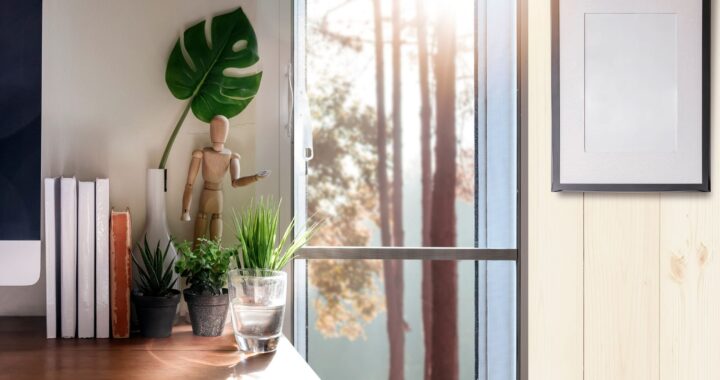The Home Cocoon: Transforming Living Spaces for Wellness and Efficiency

In recent years, a fascinating trend has emerged in the world of home design and renovation: the concept of the “home cocoon.” This innovative approach to living spaces goes beyond mere aesthetics or functionality, focusing instead on creating environments that nurture personal growth, enhance well-being, and adapt to the ever-changing needs of modern life. Let’s explore how this trend is reshaping homes and influencing the way we think about our living spaces.
The Evolution of Home Design
Traditionally, home design has focused on creating beautiful, comfortable, and functional spaces. However, the home cocoon concept takes this further by emphasizing our living environments’ transformative power. Just as a caterpillar undergoes metamorphosis within its cocoon, our homes can become catalysts for personal and familial transformation.
Key Elements of the Home Cocoon
Adaptable Spaces
One of the core principles of the home cocoon is adaptability. Rooms are designed to serve multiple purposes, easily transitioning from one function to another. For example, a home office might become a guest room, or a living area could transform into a workout space. This flexibility allows homes to evolve with the changing needs of their occupants.
Biophilic Design
Incorporating elements of nature into the home is another crucial aspect of the cocoon concept. This can include large windows for natural light, indoor plants, natural materials like wood and stone, and even water features. These elements help create a sense of connection with the natural world, promoting relaxation and well-being.
Smart Technology Integration
The home cocoon leverages technology to enhance comfort, efficiency, and security. Smart home systems can control lighting, temperature, and security, adapting to the inhabitants’ preferences and routines.

This integration of technology creates a seamless living experience that supports daily activities and promotes overall wellness.
Wellness-Focused Features
Dedicated spaces for relaxation and self-care are becoming increasingly common in home cocoon designs. This might include meditation corners, spa-like bathrooms, or small indoor gardens. These areas provide retreats within the home, encouraging mindfulness and stress reduction.
Implementing the Home Cocoon Concept
Creating a home cocoon doesn’t necessarily require a complete home overhaul. Many aspects can be implemented gradually, allowing homeowners to transform their spaces over time. Here are some steps to get started:
- Assess your current space: Identify areas that could benefit from more flexibility or that don’t fully meet your needs.
- Prioritize adaptability: Consider how spaces can serve multiple purposes when making changes.
- Bring nature indoors: Incorporate plants and natural materials and maximize natural light where possible.
- Invest in smart technology: Start with basic smart home features and expand as needed.
- Create wellness zones: Designate areas specifically for relaxation and self-care.
Financing Your Home Cocoon
Transforming your home into a cocoon of wellness and efficiency can be exciting, but it’s important to consider the financial aspects. Many homeowners find themselves exploring various financing options to bring their vision to life. While some may have savings set aside, others might consider loans to fund their home metamorphosis.
When considering a loan, it’s crucial to clearly define its purpose. The answer to the purpose of a loan often lies in how well it aligns with your overall goals for your home cocoon project. Are you looking to make energy-efficient upgrades that could save money in the long run? Or perhaps you’re aiming to create a more adaptable space to increase your home’s value? Understanding your objectives can help you choose the most appropriate financing option and ensure the investment aligns with your long-term plans.
Several types of loans could be suitable for home cocoon projects, including home equity, personal, or even specific home improvement loans. Loans like Redwood Coast Finance offer various options tailored to different needs.

Each option has its pros and cons, and the best choice will depend on your circumstances, credit situation, and the scope of your project. By carefully considering the purpose of your loan and how it fits into your overall home transformation strategy, you can make a more informed decision about which financing option to pursue.
The Impact of the Home Cocoon
Embracing the home cocoon concept can have profound effects on our daily lives. Here are some potential benefits:
- Improved well-being: By creating spaces that promote relaxation and connection with nature, we can reduce stress and improve overall mental health.
- Enhanced productivity: Adaptable spaces that cater to our changing needs can boost efficiency and creativity.
- Increased sustainability: Energy-efficient features and smart home technology can reduce our environmental impact.
- Better work-life balance: With more people working from home, the cocoon concept helps create clear boundaries between work and personal life.
- Stronger family connections: Thoughtfully designed shared spaces can encourage more meaningful interactions among family members.
Looking to the Future
As our understanding of the connection between our environment and well-being grows, the home cocoon trend will likely evolve further. We may see increased integration of health monitoring technologies, more emphasis on sustainable and eco-friendly materials, and even more flexible architectural designs that allow homes to physically transform based on needs.
The home cocoon concept represents a shift in how we view our living spaces – not just as shelters but as nurturing environments that support our growth and well-being. By embracing this approach, we can create homes that truly serve as sanctuaries, adapting to our needs and helping us thrive in an ever-changing world.

 How Often Should You Repaint Your Walls? A Room-by-Room Guide
How Often Should You Repaint Your Walls? A Room-by-Room Guide  Boost Productivity: The Most Plants to Elevate Your Home Office Space
Boost Productivity: The Most Plants to Elevate Your Home Office Space  Transform Your Living Room Into a Luxurious Home Theatre on a Budget
Transform Your Living Room Into a Luxurious Home Theatre on a Budget